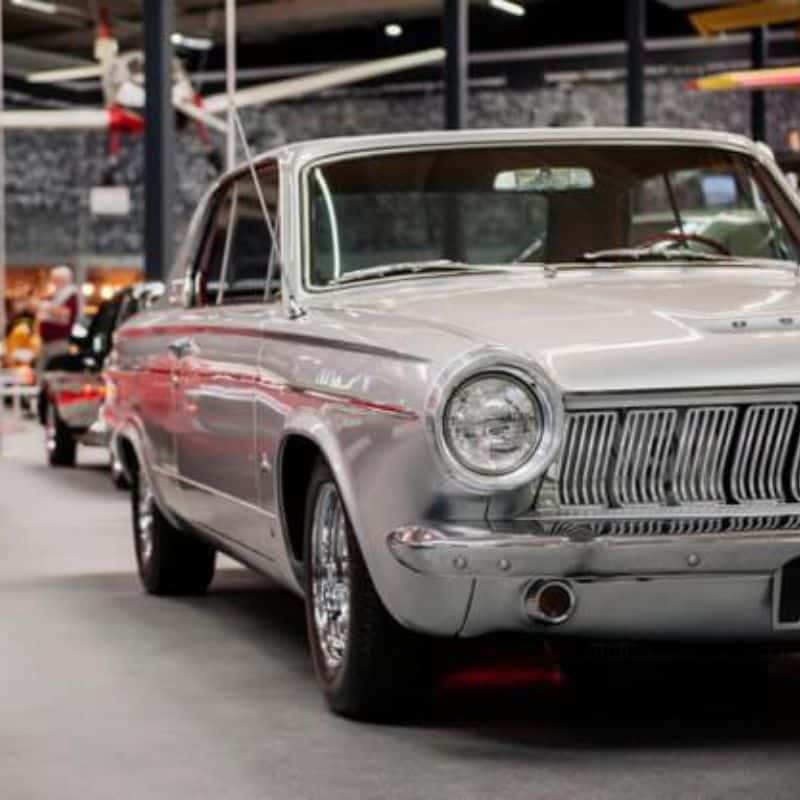We got you covered
Classic Car Insurance
Don't leave everything to chance; keep yourself protected with an insurance
Get Started34+ years serving people
100% customer satisfaction
8 knowledgeable advisors to help you

Classic Car Insurance Provided By Our Agency
Does your love of cars border on obsession? Perhaps you own a piece of automotive history — a perfectly preserved 1930s dual-cowl phaeton or 1960s roadster. Maybe you spend weekends cruising the boulevard in your classic custom or hot rod. Or your taste might run to exotic sports cars. Whatever your automotive passion, you can protect your collectible vehicle — and your investment in it.
Liability insurance
Collision & Comprehensive
Uninsured Motorist
Cherished Salvage
Spare Parts & Tools
Liability insurance coverage
Risk Factors
This coverage is quite important for unintentional damages and injuries.
Solution
This coverage pays for damage and injuries you cause to others. It also pays for a legal defense in case you are sued because of the car accident you caused. This coverage type is required in most states if you plan to drive your vehicle on public roads.
Collision & comprehensive coverage
Risk Factors
Your classic car is exposed to a wide range of risks and you need coverage to cope up with the losses.
Solution
These insurance types cover a wide range of problems such as car accident damage to your own car, auto theft, vandalism, collisions with animals, fire, flood, hail, falling objects and riots.
Uninsured motorist coverage
Risk Factors
There can be a possibility that you crash into an uninsured driver and damage your classic car.
Solution
This coverage pays for your medical bills if someone without insurance crashes into you. Some states require you to carry this coverage. In some states it can also cover car damage caused by an uninsured driver.
Cherished salvage coverage
Risk Factors
Your classic vehicle is totaled by a problem that’s covered by the policy (like a car accident or flood) and damages your vehicle.
Solution
With this coverage, you’ll have the right to keep the salvaged car and still get a pay-out from the insurance company (minus your deductible).
Spare parts & tools coverage
Risk Factors
You take your classic car to the service station and they ask you to replace some damaged spare parts with the new ones.
Solution
This covers spare parts and personal tools used to maintain or restore your classic car. Some auto insurance companies might cover spare parts even if they are not intended for the vehicle on the policy.
What is Classic car insurance?
Classic car insurance is a special type of policy that helps protect antique or classic cars. Definitions of a classic car can vary, but the Insurance Information Institute (III) says a car is considered a classic when it’s at least 25 to 30 years old.
Standard car insurance may provide some coverage for a classic car, but it may not cover the full value of the vehicle. That’s because standard policies take age, mileage, and depreciation into account when determining how much a car is worth. But if a classic car has been customized or restored, for example, it may be worth more than its depreciated value. Therefore, a regular car insurance policy may not be enough to help cover the cost of repairs after an accident.
Standard car insurance may provide some coverage for a classic car, but it may not cover the full value of the vehicle. That’s because standard policies take age, mileage, and depreciation into account when determining how much a car is worth. But if a classic car has been customized or restored, for example, it may be worth more than its depreciated value. Therefore, a regular car insurance policy may not be enough to help cover the cost of repairs after an accident.
What are the types of Classic car insurance coverages?
Classic car insurance typically offers coverage types similar to a personal auto insurance policy:
Liability auto insurance
This coverage pays for damage and injuries you cause to others. It also pays for a legal defense in case you are sued because of a car accident you caused. This coverage type is required in most states if you plan to drive your vehicle on public roads.
Collision and comprehensive insurance
Together, these insurance types cover a wide range of problems such as accident damage to your own car, auto theft, vandalism, collisions with animals, fire, flood, hail, falling objects and riots.
Uninsured motorist coverage
This coverage pays for your medical bills if someone without insurance crashes into you. Some states require you to carry this coverage. In some states, it can also cover car damage caused by an uninsured driver.
In addition to the standard coverage types, classic car insurance typically has some optional coverage types that you can tailor to your needs:
Liability auto insurance
This coverage pays for damage and injuries you cause to others. It also pays for a legal defense in case you are sued because of a car accident you caused. This coverage type is required in most states if you plan to drive your vehicle on public roads.
Collision and comprehensive insurance
Together, these insurance types cover a wide range of problems such as accident damage to your own car, auto theft, vandalism, collisions with animals, fire, flood, hail, falling objects and riots.
Uninsured motorist coverage
This coverage pays for your medical bills if someone without insurance crashes into you. Some states require you to carry this coverage. In some states, it can also cover car damage caused by an uninsured driver.
In addition to the standard coverage types, classic car insurance typically has some optional coverage types that you can tailor to your needs:
- Cherished salvage coverage
- Spare parts and automotive tools coverage
- Vehicle under construction coverage
- Automobilia coverage
Why is Classic car insurance important?
They’re often more expensive than everyday rides, and they may require more complicated and specialized repairs if they’re damaged. Classic and collector cars are also, by virtue of their value and rarity, more likely to be stolen or vandalized, making insurance all the more important.
How do you qualify for Classic Car Insurance?
More than the age and value of a vehicle are considered when it comes to qualifying for classic car insurance. The III says you’ll likely need to meet other requirements. For example, a vehicle that’s protected by classic car insurance typically cannot be used for everyday driving. A classic car insurance policy may include mileage limitations, and some insurers require proof that the car is stored properly and that you have another vehicle for routine driving.
Some insurers allow you to drive the vehicle to car shows and auto club events. If not, you may need to purchase special coverage for those kinds of trips, the III says. Additionally, the insured vehicle typically must be securely stored in a private garage or other locked facility when not in use.
Insurers may also require you to have a clean driving record in order to purchase or renew a classic car insurance policy.
To learn more about coverage options so you can protect your classic car do get in touch with us.
Some insurers allow you to drive the vehicle to car shows and auto club events. If not, you may need to purchase special coverage for those kinds of trips, the III says. Additionally, the insured vehicle typically must be securely stored in a private garage or other locked facility when not in use.
Insurers may also require you to have a clean driving record in order to purchase or renew a classic car insurance policy.
To learn more about coverage options so you can protect your classic car do get in touch with us.

Already have Classic Car Insurance? Switching is easy
It might be time to switch insurers whenever the service that your existing insurer provides doesn’t meet your needs. For example, if you have a poor claims experience or an unexplained rate increase, it might be time to consider other options
If you cancel a previous policy before a new policy is effective, you could run into some serious financial problems.
Contact us today to help you with multiple options to choose from.
If you cancel a previous policy before a new policy is effective, you could run into some serious financial problems.
Contact us today to help you with multiple options to choose from.
Request a Quote
Get Personalized Insurance
© 2025 Russo Insurance Designed by Amplispot
Privacy Policy
